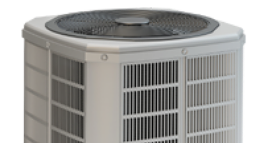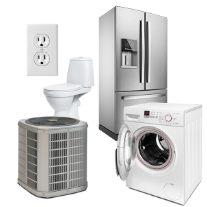Maintaining Your Home’s Perimeter Drain System
The average home contains many drains, and you’re probably familiar with most of them since they’re part of a sink, bathtub, or shower. There’s one type of drain you might not be as familiar with, though.
Your home’s perimeter drain system is a lesser-known, but very important, part of your plumbing system. It helps keep moisture out of your basement and it’s another system in your home that you should Know about. Here’s everything you need to know about perimeter drain systems, including how to tell if something has gone wrong.
What is a perimeter drain system?
Perimeter drain systems are also called weeping tile systems, and they’re incredibly important for keeping your basement and/or crawl space area free of damaging moisture. All houses have these drainage systems and they’re located outside of the home. Rain, melting snow and rising groundwater all lead to more moisture being stored in the soils that surround your home’s foundation, which can lead to foundation problems and failures if not addressed.
The design of a perimeter drain system attracts water from within the soil that has accumulated over time. The system then carries that water away from your home. As a result, water is less likely to seep into your basement’s walls.
The perimeter drain itself is simply a perforated pipe with a mesh “sock” covering it (keeping soil out) that’s installed underground, circling the perimeter of your home. Those tiny holes allow water to enter the pipe, where it can then be drained away from your home’s foundation. The pipe will be out of sight — it’s covered in layers of gravel in varying sizes and then back-filled with soil to help water flow toward your main sewage system. In older homes, clay or concrete weeping tiles are used for the same purpose.
How can I tell if there’s a problem with my perimeter drain system?
There’s not much to doing the way of maintenance when it comes to these drainage systems, since everything is covered with dirt and gravel.
The most common issue with perimeter drains involves the system becoming clogged with dirt, roots and other underground debris. When this happens, water can seep into your basement walls. If you notice water in your walls it’s time to call a qualified plumber. Unfortunately, they’ll probably have to do some digging to reach the pipes.
Older homes that use clay or concrete weeping tiles to drain water are prone to more problems as they age, and will often become unusable over time. In these cases, the whole system or damaged parts of the system might need a replacement. Sometimes, blocked tiles that haven’t yet collapsed can be fixed with a system flush. Again, this is a job for a qualified professional — they’ll be able to explain your options so that your home stays moisture-free.
Now that you know your perimeter drain system is doing its job and operating efficiently, consider protecting the rest of your home and its appliances with an affordable Home Warranty Service Agreement. Visit 2-10.com to find out how a Service Agreement can protect you from financial surprises at home.









